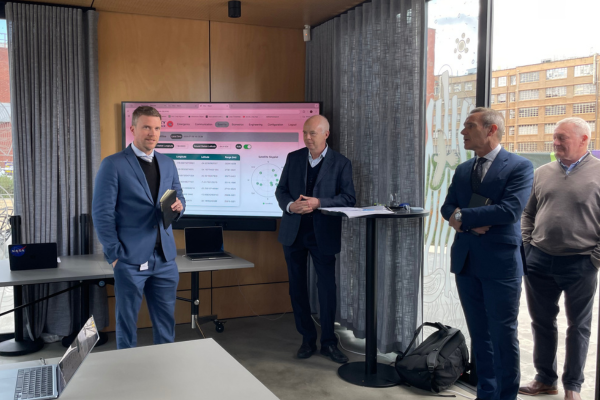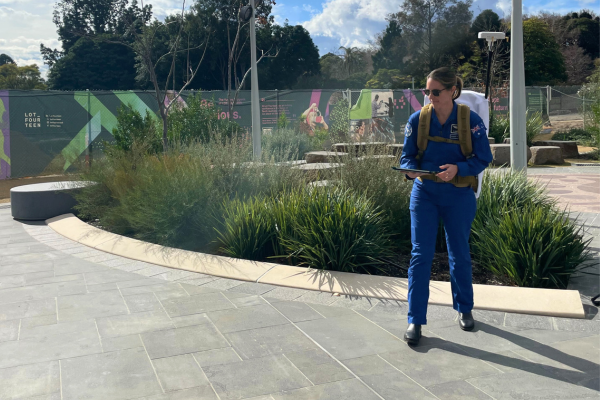SmartSat was proud to be in attendance for the successful demonstration of supporting participant Safety from Space‘s cutting-edge emergency beacon technology, showcasing its potential to revolutionise search-and-rescue operations for astronauts on the Moon.
The well attended demonstration was made possible thanks to co-funding from the South Australian Government, through the South Australia Space Industry Centre (SASIC), and SmartSat. The Australian Space Agency further supported the initiative through the involvement of Australian Astronaut, GPCAPT Katherine Bennell-Pegg, whose participation underscored the technology’s prospective role in safeguarding the future of astronaut safety.
 SASIC Director, Campbell Pegg, addresses the observers at the Demonstration along with Safety from Space Co-founder Dr Mark Rice, Chief Executive of Defence SA Matt Opie, and Safety from Space Systems Development Expert Doug Mein.
SASIC Director, Campbell Pegg, addresses the observers at the Demonstration along with Safety from Space Co-founder Dr Mark Rice, Chief Executive of Defence SA Matt Opie, and Safety from Space Systems Development Expert Doug Mein.
The developing technology builds on a suite of SmartSat-backed projects initially aimed at enhancing terrestrial search and rescue with direct involvement from the US space agency NASA, whose efforts are focussed on developing solutions that can be applied to both terrestrial search and rescue, and future applications for Lunar Search and Rescue (LunaSAR) geolocation and communication needs.
A cornerstone of this innovation is the LunaSAR system, showcased here enabling voice messaging using the existing second-generation beacon standard, providing robust two-way voice communication in remote or emergency contexts. The LunaSAR is a prototype geolocation and austere communications system designed to assist stranded astronauts on the Moon using the Beagle waveform, developed in collaboration with NASA’s Search and Rescue Laboratory.
A key feature of the approach is the ability to support two-way communications to support search and rescue activities. Safety from Space demonstrated, for the first time, how LunaSAR could support simultaneous voice and text messaging through modifications to the existing second-generation beacon standard.
 Astronaut at the Australian Space Agency, GPCAPT Katherine Bennell-Pegg, testing the Safety from Space LunaSAR system
Astronaut at the Australian Space Agency, GPCAPT Katherine Bennell-Pegg, testing the Safety from Space LunaSAR system
The newly demonstrated search-and-rescue capability is underpinned by a high-performance, highly resilient communications waveform that remains fully compatible with legacy standards and infrastructure. Importantly, all development, testing, and demonstration activities were conducted using fully operational search-and-rescue frameworks, coordinated in partnership with the Australian Maritime Safety Authority (AMSA)—a trusted operator of search-and-rescue missions across Australia and vast swathes of global maritime and aerial territory.